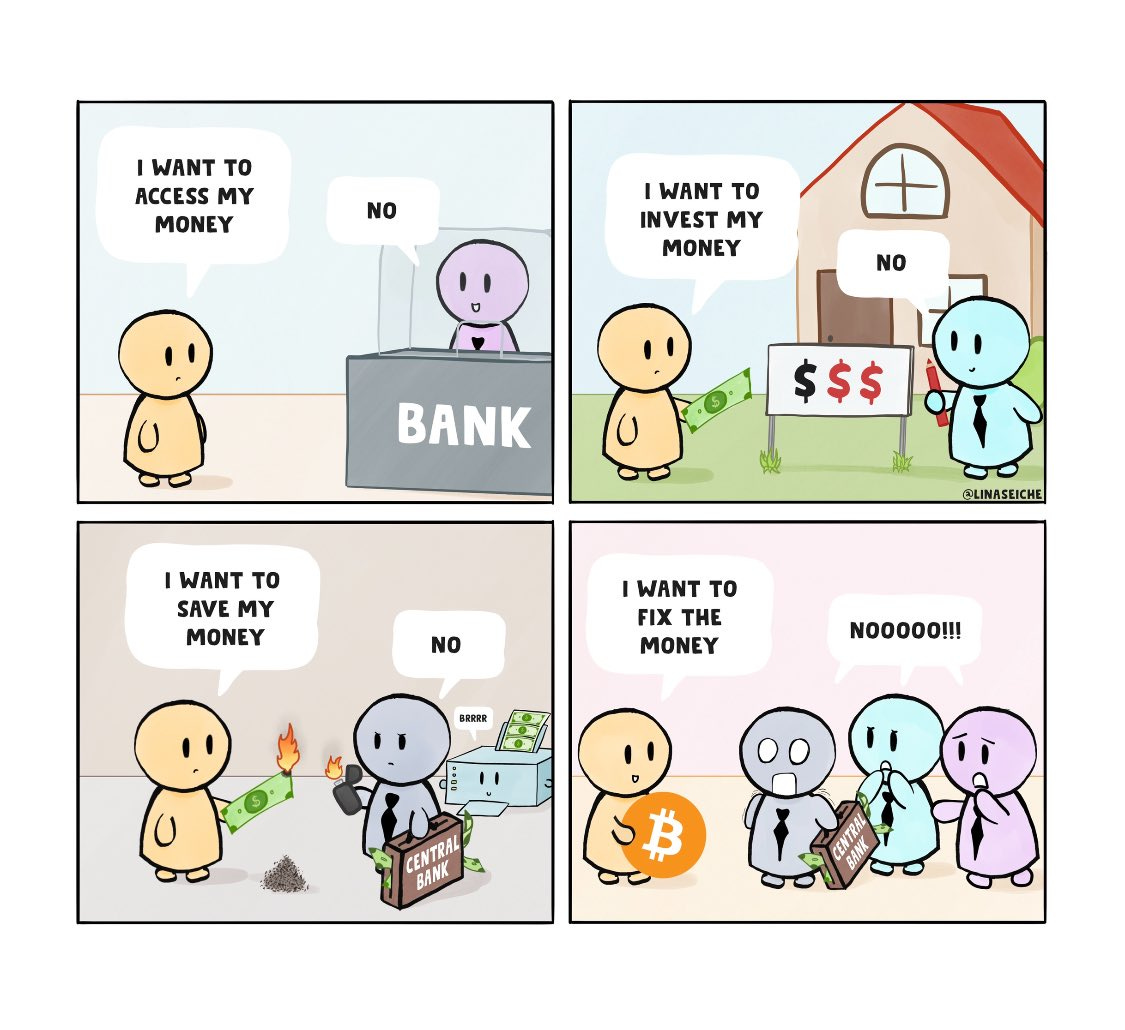Altcoins are a Cesspool. Bitcoin Tech Talk #264
There was an interesting rug pull recently with a coin called IslaInu. The coin is like many others in that it was a meme coin, combining the Island Boi meme with Shiba Inu. The entire saga is an interesting look behind the curtain of what actually goes on with these things as an “influencer” was given 1% of the premine in order to promote the coin. The drama came in when she dumped the coins instead of holding onto them as she had agreed.
Rea (the influencer) made some money unethically, getting a little over 6 figures for a couple of tweets. The record of all the messages back and forth makes her look greedy and deflective. She’s now trying to blame others for her own immoral actions, but that’s not really the big part of the story.
The more interesting aspect of the story is about how altcoins like this are managed. There’s a critical threshold that coin creators need to get the snowball of attention rolling downhill. As more and more people find out about the coin, there’s a natural momentum that builds up where anyone with the coin will shill it hard to get even more people involved. Getting that ball rolling requires a lot of marketing and these coins use influencers to get there.
This is in contrast to the 2017 cycle where there was at least some technical justification for the coin, even if it was utterly stupid like a coin for dentists. The coins this cycle are focused way more on marketing. They’ve figured out that altcoins really are all about marketing, literally managing the market perception. What this particular altcoin creator didn’t expect was the influencer screwing them over by dumping early and that’s what’s caused the entire blowup. In other words, price and perception go very closely together and the whole game of altcoins is one of manipulating the public so that the perception will cause the price to go up.
This is the same game that central banks are playing. Central bank monetary policy is all about changing public perception and they use all sorts of tools to boost market confidence. What’s surprising about this episode, then, is that the crypto influencer actually did a rug pull. Had she held on and the coin reached critical mass, she probably would have made a lot more money. She simply didn’t have a low enough time preference and probably sold her influence for less than what she could have gotten.
The whole mechanic of the altcoin economy is one of ripping people off. The coin creators want to rip off the public. The influencer wants to rip off the coin creators. Similarly, central bankers are in the business of ripping off the public and the government is ripping off the central bank. It really does seem like everyone is a scammer.
In a sense, this is due to the human desire to get something for nothing. People would rather do less work and ethics are but a small sacrifice. This is an evil instinct in all human beings which is why every culture has some moral rule against stealing. Yet in a fiat monetary system, theft becomes a part of the system and getting something for nothing becomes a normal way to make a living.
In other words, the altcoin phenomenon of theft through manipulation of the public is caused by the existence of a money printer. After all, if the government can print money, why can’t we? What altcoins have unleashed is bringing money printing to the masses instead of having it be a banking monopoly. The only difference is that the money printing is done beforehand instead of afterwards and used to manipulate the public.
I’ve been known to call the central-bank backed fiat monetary system a cesspool of theft, corruption, and cronyism. As this episode has shown, altcoins are also a cesspool of theft, corruption and cronyism. Fiat money and altcoins have a lot more in common than altcoiners would lead you to believe.
It’s Bitcoin that is really different.
Bitcoin
Lisa Neigut has proposed to get rid of the mempool! Her rationale is that so much of the network communication is to convey unconfirmed transactions. Reducing this load would definitely reduce the bandwidth requirements of a node. The idea is radical and I love that she’s thinking about how to reduce this rather costly communication. Practically, mempool fee estimation is the most accurate we have and there’s no easy way to identify all miners on the network, so I don’t know if this can be adopted generally. That said, some limited form of this would be very useful for light nodes, say running pruned.
Blockstream is pioneering Bitcoin e-cash with Minimint. This is based on David Chaum’s e-cash concept, which issues claims against an issuer, but transfers are completely blinded. Sadly, Chaum’s Digicash lost out to credit cards in the late 90’s as the payment method of choice, but Blockstream is seeking to bring it back. This is a clever way to add a lot of privacy to the transaction since neither the merchant or the e-cash issuer can trace your payment to anything. You do need to deposit Bitcoin with the issuer, however, so there is some custody risk, but the privacy of the transaction itself is very interesting. This is essentially a tradeoff between self custody and privacy, which is not really something that normally trade off against each other.
MercuryWallet is live with their implementation of statechains. They have a pretty slick demo, which shows where their focus is at the moment. The idea is that once BTC is deposited into MercuryWallet, using statechains, you can swap the coins with other users and your UTXO will have a different history. This is a privacy technique that’s rather clever and similar to a coinjoin. They have a 0.5% withdrawal fee, though, so don’t deposit unless you’re planning to keep your Bitcoins in their wallet.
Lightning
BTCPay Server 1.3.0 is out and it has LNURL support! This is a natural addition to the product as many people running BTCPay already have a domain that they’re running under. I love that you can now run a whole store strictly on Bitcoin with this software. Digital payments used to always require banks. We really can be our own banks now.
Flow is an easy way to open Lightning channels. Flow gives users access to Lightning Pool allowing them to purchase inbound liquidity. For anyone that has a store, this ends up being the equivalent of a credit card fee, except it’s done in a decentralized way. As Lightning gets more adoption, markets like this will get a lot more competitive.
Kollider explains how you can hedge risks in a Lightning operation. The idea is that Lightning forces node operators to lock up in Bitcoin and there are strategies where a corresponding short position on Bitcoin can hedge the position in dollar terms. This way, the operation can still run profitably given the dollar denominated costs. Much like how we saw mining grow from an amateur thing to a huge business, I expect lightning routers to do the same. No doubt that these financial derivatives will be important to hedge against certain risks for such businesses.
Economics, Engineering, Etc.
I wrote a rebuttal to a piece put out by The Gospel Coalition on Bitcoin. The Gospel Coalition’s article was written by a Keynesian economist, so my rebuttal was mostly economic, not biblical. The argument of the original article was really an argument from authority, so I poked some obvious holes. I would love to publish more pieces like this for a Christian audience, so if any reader of this newsletter has contacts, please let me know.
Blockstream has activated Taproot on Liquid and AJ Towns has some criticism of the Liquid network, which Andrew Poelstra has responded to. The main criticism from AJ (a core developer) is that there are systemic fragilities because of the proprietary nature of the signing for blocks. Additionally, he thinks there should be a testnet for Elements, so that changes can be tested first. Poelstra replied that the design of Liquid is different and the network would rather shut down than continue in a degraded state. Everything here is worth reading, though some of it may seem a bit inside baseball. I respect both guys immensely and they have clearly stated positions and perspectives that any reasonable person can understand.
A new paper points out three different attacks on a proof-of-stake Ethereum. This would normally be down in the Quick Hits section, but there was a bomshell in the paper: “So with more than 99.6% probability, an adversary with 0.09% of total stake is in a position to execute a 1-reorg for any given day.” Given all the crazy DeFi contracts that depend on instant execution and so on, this seems like a pretty big attack vector. This analysis confirms how proof-of-stake systems are a complete joke.
Nic Carter and Shaun Connell write a response to Tim de Chant’s rather uninformed analysis of Ted Cruz’s Texas flare gas mining proposal. As Nic and Shaun show, De Chant completely misunderstands what Cruz is proposing and show the economic variables that miners are dealing with. As they show, at a certain electricity price, all miners simply shut down as it’s no longer profitable to run. Electricity grid operations is something that a lot of the public doesn’t understand and it’s purposefully obfuscated by ESG types to enforce a particular narrative. Much like fiat money, this is something we really need to educate the public about.
Robert Breedlove continues his series on Our Most Brilliant Idea in parts 3 and 4. In part 3, Robert goes through why gold was so useful as money and how it led to a period of global prosperity under the gold standard. He then traces how central banks were justified by the physical limitations of gold. Part 4 goes into trade and government. The series is a good framework by which to evaluate all that’s going on.
Compass Mining has introduced retail miner financing. They basically allow you to pay for mining equipment over time, allowing people to get in without so much capital expenditure. I suspect that this is how mining operations will eventually be built out, through loans and such. Given that most loans are printed ex nihilo, fiat is literally being used to build bitcoin.
Quick Hits
Mastercard is plans to allow merchants to accept crypto.
El Salvador keeps stacking.
Another week, another altcoin sees its hopes dashed.
Another week, another smart contract is “exploited” for $100M.
Events
I will be in Atlanta for TabConf this week on November 4-6. I am planning to be in London for Advancing Bitcoin March 3-4, but there is some possibility I won’t be able to get into the UK.
The Programming Blockchain seminar is in Atlanta, GA on November 2-3. This is a 2-day seminar for programmers to learn about Bitcoin. You can apply here. I also have a few scholarships available for those that can’t afford it.
Podcasts, Etc.
On this week’s Bitcoin Fixes This, I talked to Emmet Penney about Nuclear Power. He explained how the public perception and safety record of Nuclear are completely divergent and shows the consequences of policies that have been enacted to shut down nuclear. The conversation was enlightening for how nuclear has been deterred by lobbying and not anything in reality.
I read through last week’s newsletter which you can find here.
I was on the Off the Clock podcast to talk about the link between health care and Bitcoin. I talked about the new book with the Kingdom of God Entrepreneur podcast:
Unchained Capital is a sponsor of this newsletter. I am an advisor and proud to be a part of a company that’s enhancing security for Bitcoin holders. If you need multisig, collaborative custody or bitcoin native financial services, learn more here.
Fiat delenda est.











Interestingly, President Nayib Bukele has decided to take full advantage of Bitcoin by seizing every opportunity to accumulate more.